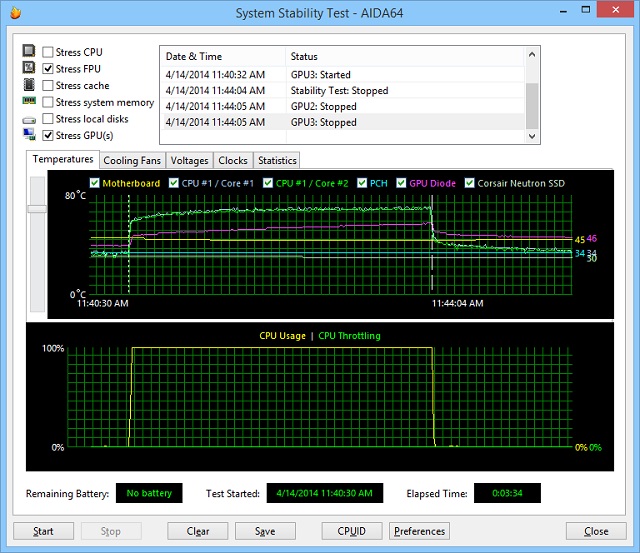

The purpose is to monitor your CPU statistics and have an option to test the system under heavy load.

#UBUNTU CPU STRESS TEST INSTALL#
Install FIRESTARTER to make it accessible to s-tui, e.g make a soft-link to FIRESTARTER in /usr/local/bin.Once you have completed these steps, you can either: Note that at the moment only CPU temperature threshold hooks are supported. If s-tui finds a script in the hooks directory with the name of a source it supports, it will run that script every 30 seconds as long as the current value of the source remains above the threshold. tempsource.sh: triggered when the CPU temperature threshold is exceeded.You can define this custom behaviour by adding a shell file to the directory ~/.config/s-tui/hooks.d with one of the following names, depending on what threshold you’re interested in reacting to: S-tui gives you the ability to run arbitrary shell scripts when a certain threshold is surpassed, like your CPU temperature. If you would like to restore defaults, simply remove the file. Selecting will save the current configuration to ~/.config/s-tui/nf. This directory will be made in ~/.config/s-tui by default. CPU temperature) does necessitate creating a config directory. However, additional features like running scripts when a certain threshold has been exceeded (e.g. S-tui is a self-contained application that can run out-of-the-box and doesn’t need config files to drive its core features. Stress options will then show up in s-tui (optional) If you would like to stress your system, install stress. nm, -no-mouse Disable Mouse for TTY systems j, -json Display a single line of stats in JSON format t, -terminal Display a single line of stats without tui csv-file CSV_FILE Use a custom CSV file. dr, -debug_run Run for 5 seconds and quit d, -debug Output debug log to _s-tui.log h, -help show this help message and exit * Run `s-tui -help` to get this message and additional cli options * Save your current configuration with the button * If your system supports it, you can use the UTF-8 button to get a smoother graph * Use the button to reset graphs and statistics * Select summaries to display in the menu * If you wish to alternate stress defaults, you can do it in * Toggle between stressed and regular operation using the radio buttons in 'Modes'. * Use the arrow keys or 'hjkl' to navigate the side bar The side bar houses the controls for the displayed graphs.Īt the bottom, all sensors reading are presented in text form. Built-in options for stressing the CPU (stress/stress-ng/FIRESTARTER).Shows performance dips caused by thermal throttling.Monitoring your CPU temperature/utilization/frequency/power.OPTIONAL integration of FIRESTARTER (via submodule, does not work on all systems).Stress-Terminal UI, s-tui, monitors CPU temperature, frequency, power and utilization in a graphical way from the terminal. Project maintained by amanusk Hosted on GitHub Pages - Theme by mattgraham The Stress Terminal UI: s-tui We can use uptime command to determine the average system load before and after running a stress command.Terminal-based CPU stress and monitoring utility Stress testing is stopped after N seconds which can be specified with -timeout option. When -cpu option is provided, a workload is generated by using sqrt function. Once installation is completed, we can check stress version: stress -version Testing stressĮxecute the stress command and provide a -cpu option and the number of workers to perform CPU stress testing.

Make sure the package lists are up-to-date: sudo apt updateĮxecute the following command to install stress: sudo apt install -y stress
#UBUNTU CPU STRESS TEST HOW TO#
This tutorial demonstrates how to install stress on Ubuntu 20.04. This allows to configure amount of load on CPU, memory, and I/O. The stress is a tool that enables to generate a workload on the system via command line.


 0 kommentar(er)
0 kommentar(er)
